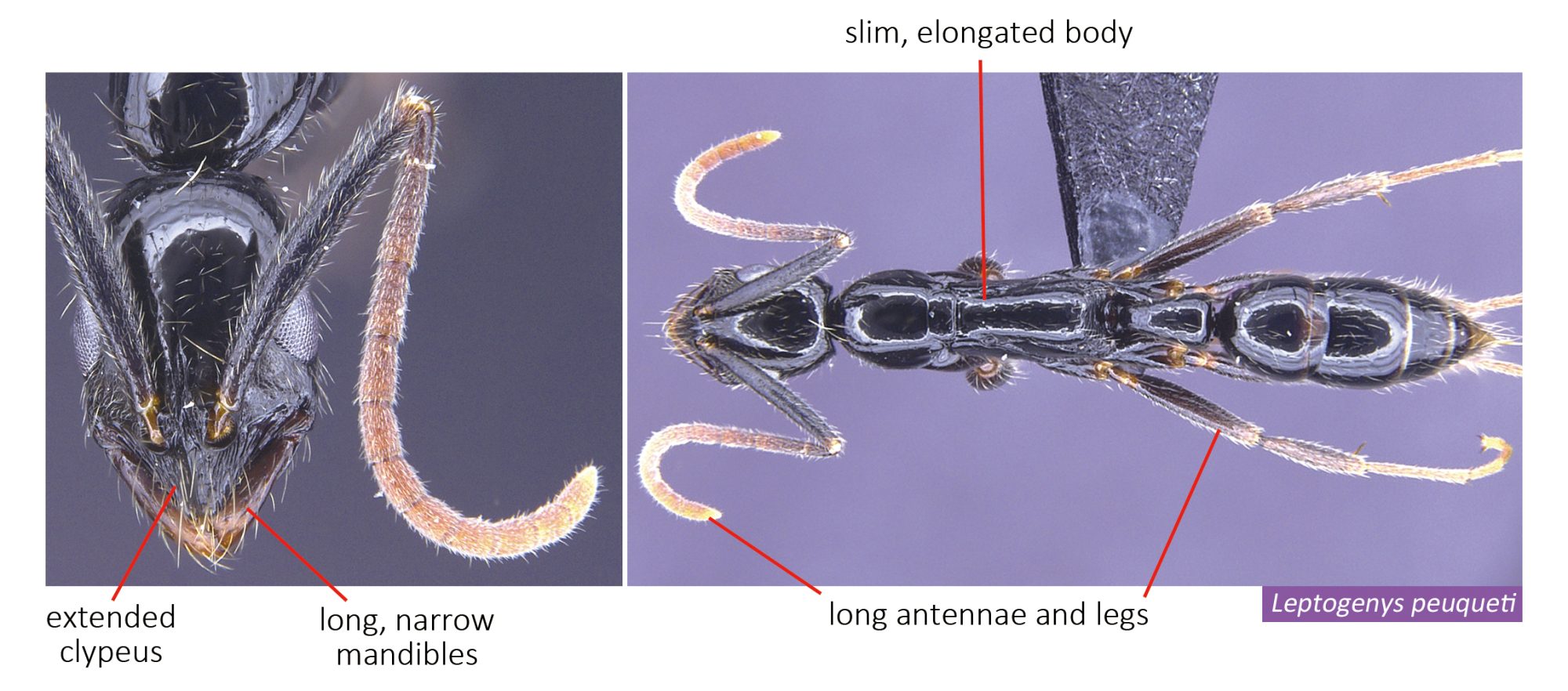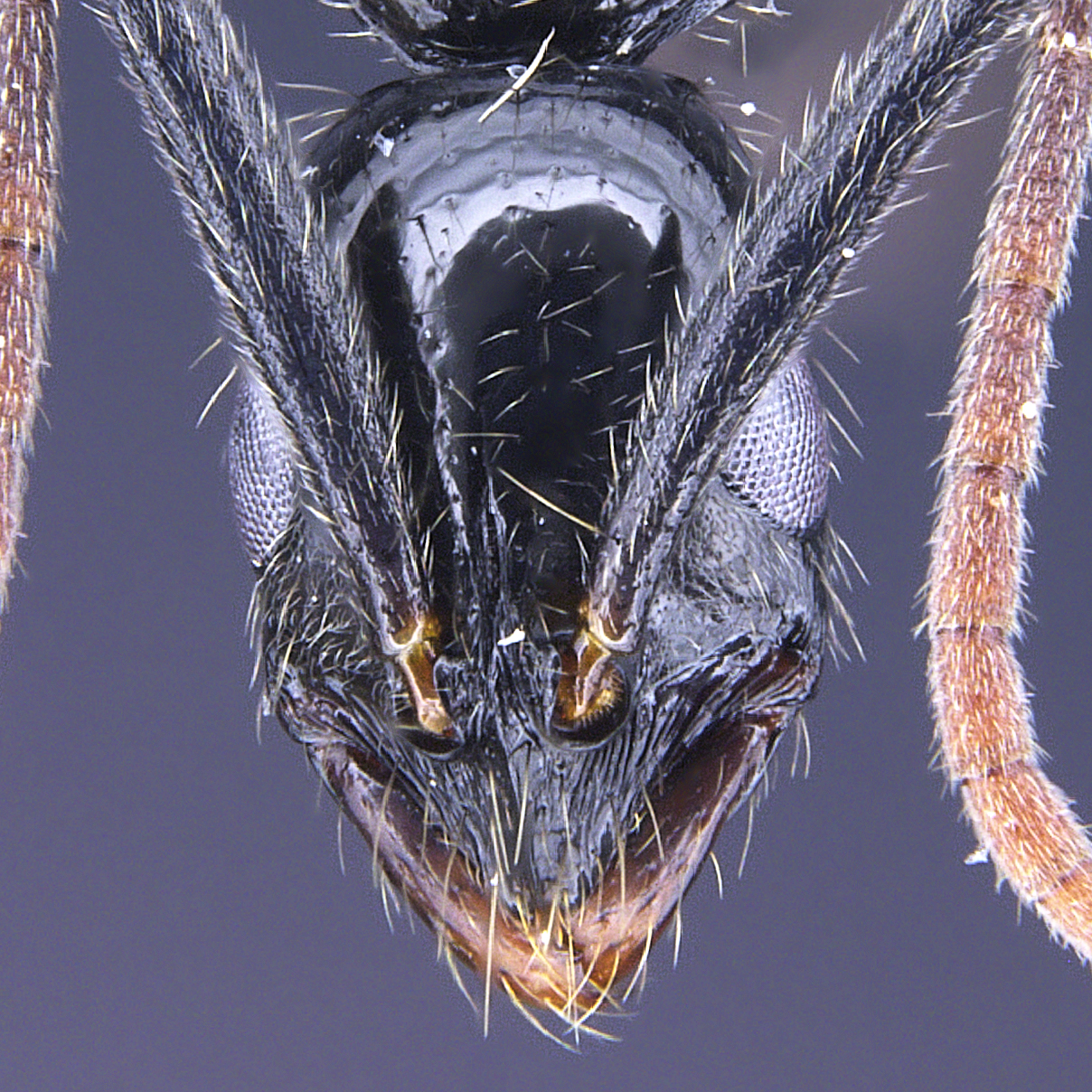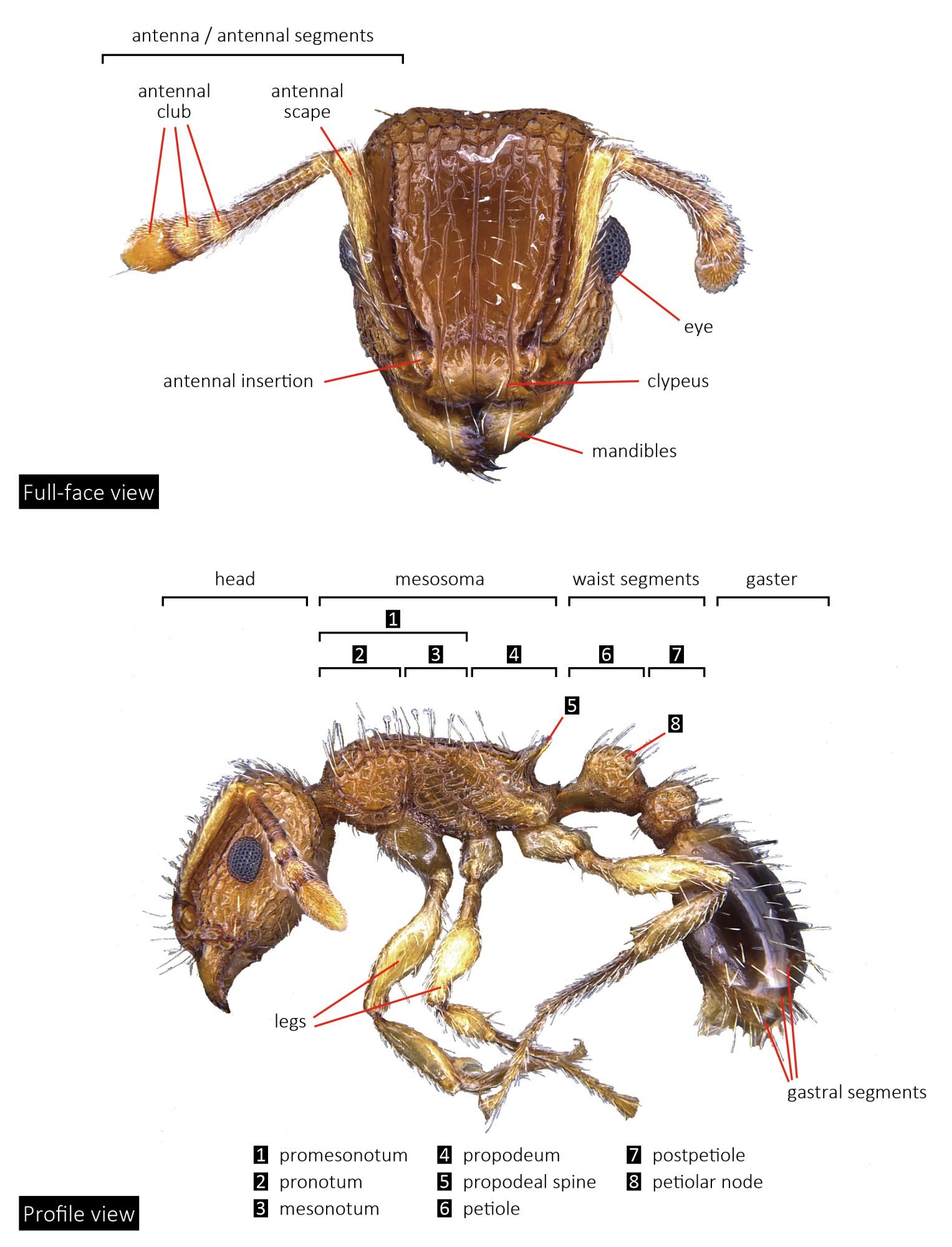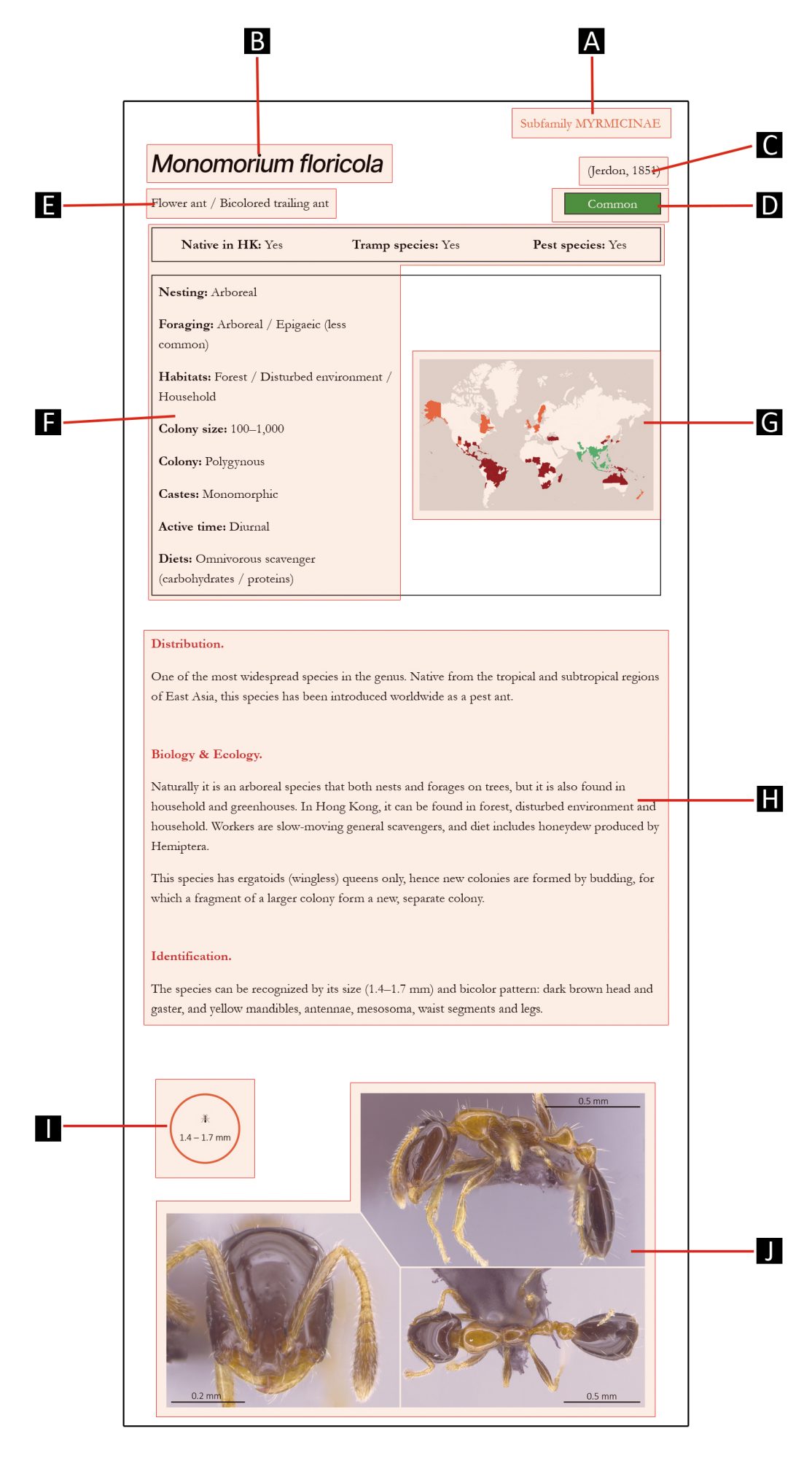
Subfamily PONERINAE
GENUS
Leptogenys
Roger, 1861
Distribution.
A large ant genus with 315 species described. This genus is one of the most successful genera of the Ponerinae subfamily. The genus has a widespread distribution, but is mainly restricted to tropical and subtropical regions.
Biology & Ecology.
Nests of Leptogenys species are usually located within the soil, leaf litter or decaying wood. New World species often form small colonies, while some Southeast Asian species have ‘army ant’ lifestyle, for which these huge colonies do not build permanent nests but are constantly on-the-move, and workers forage collectively in mass. Nests range from small to large, contain a dozen of workers up to tens of thousands of workers.
Workers of many species specialized in hunting oniscoid isopods, while army-ant species are general hunters.
Most Leptogenys species have ergatoid (wingless) queens, some species have no queen caste and have mated workers (gamergates) instead.
Identification.
Leptogenys species are medium to large in size (4–9 mm), mostly with dark brown to black coloration, often with shiny body surface, and have relatively slim and elongated bodies, but there are species with other colors and morphologies as well. They can be recognized by their long and narrow mandibles, the extended clypeus that often have tooth-like structure, and their long legs and antennae.

Species in this genus




